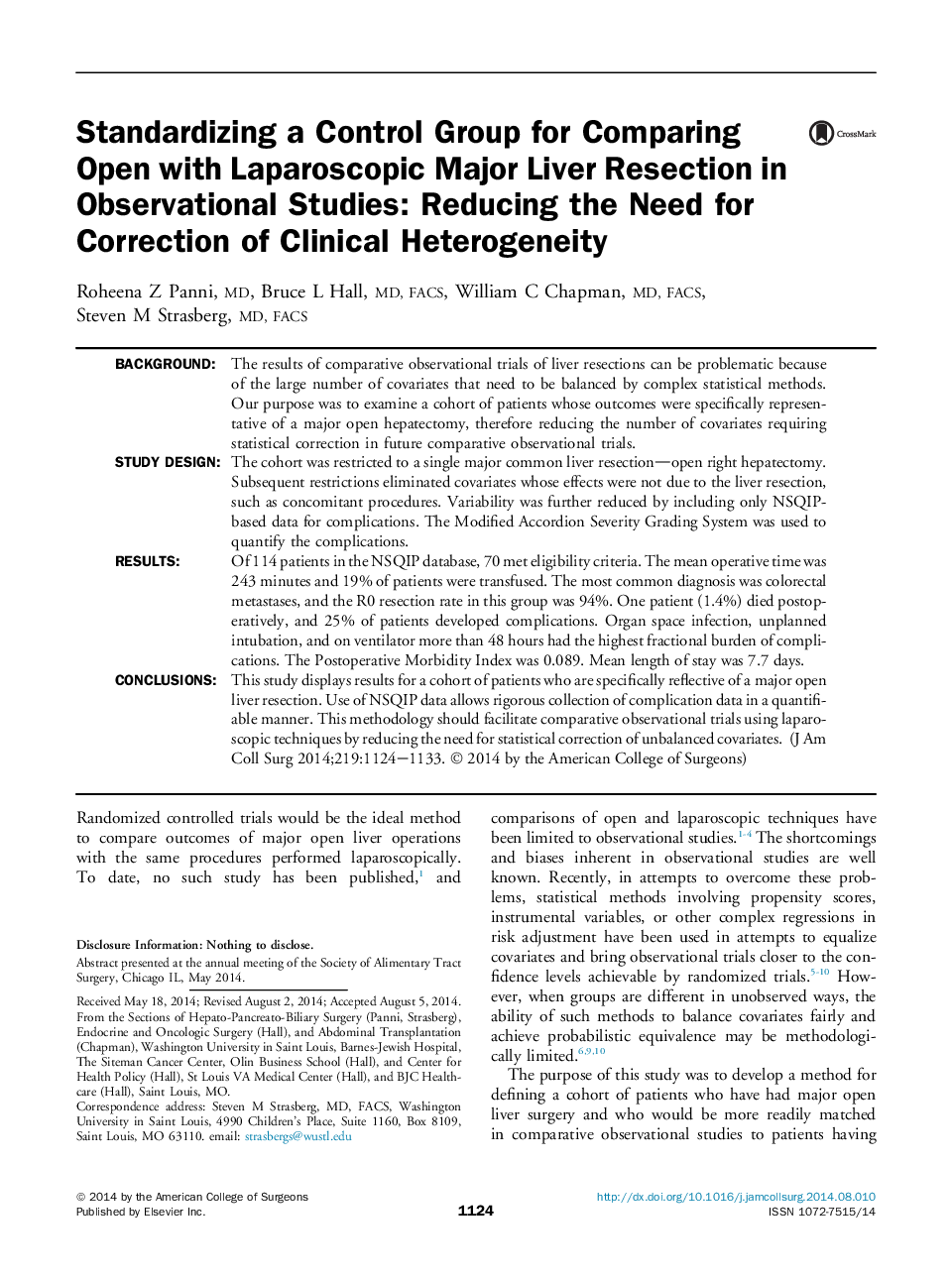| Article ID | Journal | Published Year | Pages | File Type |
|---|---|---|---|---|
| 4291303 | Journal of the American College of Surgeons | 2014 | 10 Pages |
BackgroundThe results of comparative observational trials of liver resections can be problematic because of the large number of covariates that need to be balanced by complex statistical methods. Our purpose was to examine a cohort of patients whose outcomes were specifically representative of a major open hepatectomy, therefore reducing the number of covariates requiring statistical correction in future comparative observational trials.Study DesignThe cohort was restricted to a single major common liver resection—open right hepatectomy. Subsequent restrictions eliminated covariates whose effects were not due to the liver resection, such as concomitant procedures. Variability was further reduced by including only NSQIP-based data for complications. The Modified Accordion Severity Grading System was used to quantify the complications.ResultsOf 114 patients in the NSQIP database, 70 met eligibility criteria. The mean operative time was 243 minutes and 19% of patients were transfused. The most common diagnosis was colorectal metastases, and the R0 resection rate in this group was 94%. One patient (1.4%) died postoperatively, and 25% of patients developed complications. Organ space infection, unplanned intubation, and on ventilator more than 48 hours had the highest fractional burden of complications. The Postoperative Morbidity Index was 0.089. Mean length of stay was 7.7 days.ConclusionsThis study displays results for a cohort of patients who are specifically reflective of a major open liver resection. Use of NSQIP data allows rigorous collection of complication data in a quantifiable manner. This methodology should facilitate comparative observational trials using laparoscopic techniques by reducing the need for statistical correction of unbalanced covariates.
